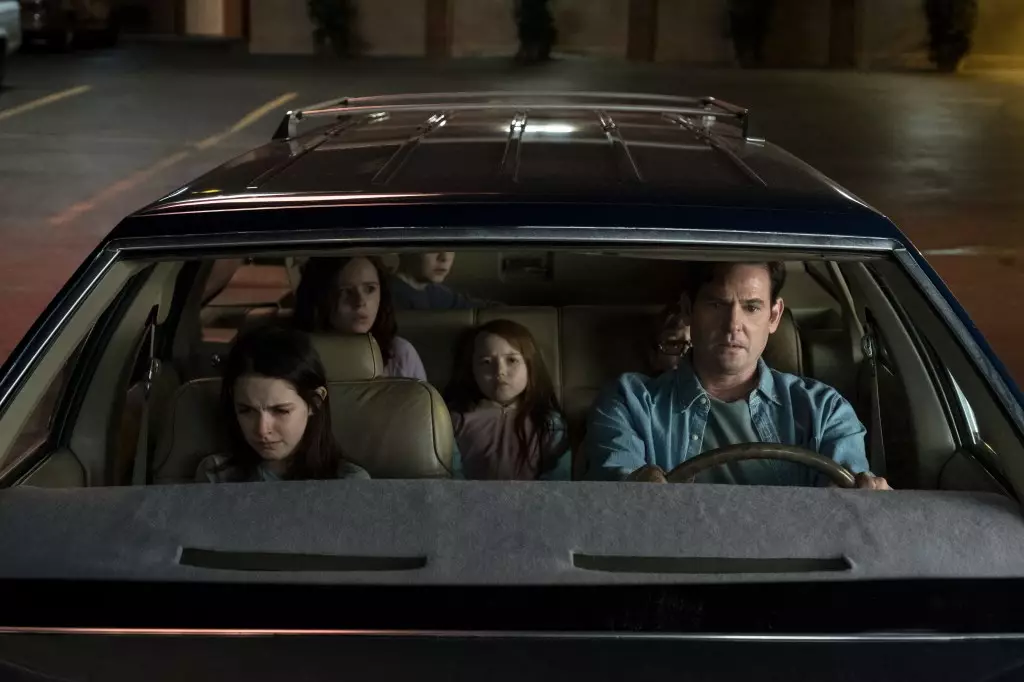Mike Flanagan, a name synonymous with modern horror, has unleashed a torrent of emotions through his art, channeling personal grief into compelling narratives. As he discussed at the SXSW London event, his experiences following a tragic family suicide illuminated the very essence of his acclaimed work, particularly in *The Haunting of Hill House*. In this series, the character Nell Crain’s tragic arc encapsulates a battle with despair, mirroring Flanagan’s own journey. The show, steeped in symbolism, serves as a testament to the therapeutic power of creative expression. It becomes clear that for Flanagan, filmmaking is not merely a profession; it is a lifeline—a conduit for understanding loss.
Flanagan articulates how his cinematic ventures have provided solace against the onslaught of grief. This isn’t just an exploration of ghost stories; it is an intimate portrayal of human fragility, made vivid through artistry. The haunting imagery interwoven with personal nightmares evokes a raw authenticity, inviting viewers to confront their own shadows. As activists in mental health often advocate for open discussions surrounding grief, Flanagan’s narrative prowess transcends mere entertainment—it becomes a beacon for those grappling with similar tragedies.
Breaking Stereotypes in Horror
One cannot critique Flanagan’s insights without acknowledging his defiance against the pervasive stereotypes that often blanket the horror genre. During the SXSW discussion, he painted a vivid picture of the “bias against horror” prevalent in both the industry and among audiences. Despite the undeniable success of horror masterpieces, there remains an air of skepticism about the genre’s narrative depth—an irony considering many horror films stem from profound emotional truths.
Flanagan points out that every time a project like Jordan Peele’s *Get Out* garners acclaim, the industry awakens to the dormant complexity in horror, only to revert back to its narrow perceptions shortly thereafter. What many fail to see is that horror is not solely about the thrill or the chills; it encapsulates a broader exploration of human nature, societal fears, and existential dread. Herein lies a crucial argument: to appreciate horror, one must dig deeper, recognizing that every spine-tingling moment often stems from a relatable human experience.
More Than Just Scares
Flanagan’s artistic vision extends into collaborations with iconic horror writer Stephen King, whose work he deftly adapts with an acute understanding of underlying emotional themes. Surprisingly, Flanagan asserts that King is anything but just a horror writer; he is, in essence, a humanist. King’s richly layered narratives delve into friendship and genuine human connections, often underscoring the horror derived from the fragility of those bonds rather than simply relying on supernatural shocks. This perspective reframes horror not as an exploitative genre but as one that embodies the complexities of the human condition.
This intricate understanding adds depth to Flanagan’s cinematic adaptations, which resonate deeply with audiences. When we regard characters not as mere archetypes doomed to inevitable doom but as reflections of ourselves, horror transcends its genre. It transforms into a vessel for catharsis, a way to grapple with the fears we often shy away from confronting.
The Monologue Renaissance
Apart from addressing the multilayered narratives in horror, Flanagan made a compelling case during his SXSW discussion for the preservation of monologues in film. In an age overtaken by rapid editing and fragmented storytelling, the power of a well-crafted monologue can evoke raw emotion and provoke thought, enhancing character depth. Flanagan’s plea to maintain this narrative technique serves as a reminder that amid the visual spectacle that captivates modern audiences, there lies an enduring power in the spoken word.
The strength of a monologue lies in its ability to encapsulate an entire universe of feelings and thoughts in a few moments. In an era dominated by streaming giants reducing cinematic artistry to marketability, Flanagan’s defense of monologues stands as a rallying cry for authenticity in storytelling.
Through his journey, Mike Flanagan redefines what horror means—imbuing it with sensitivity and emotional resonance while challenging pervasive misconceptions. In doing so, he not only enriches the genre but also offers an understanding that transcends individual experience, bridging collective pain and catharsis through his art.

